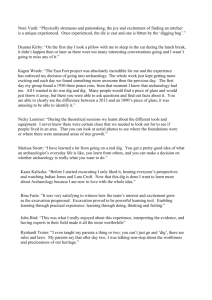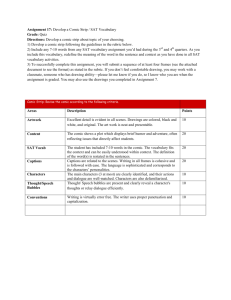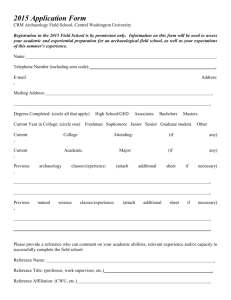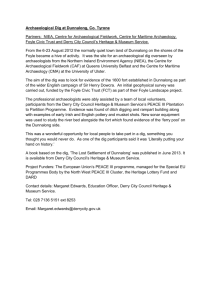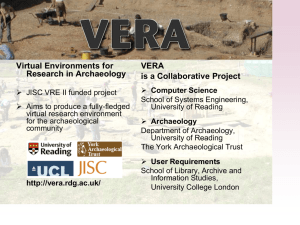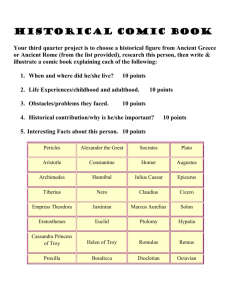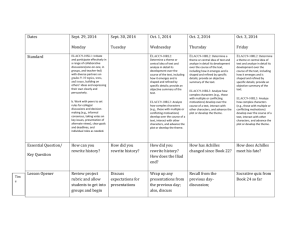Archaeology Project - Mrs. Jungclaus`s Class
advertisement
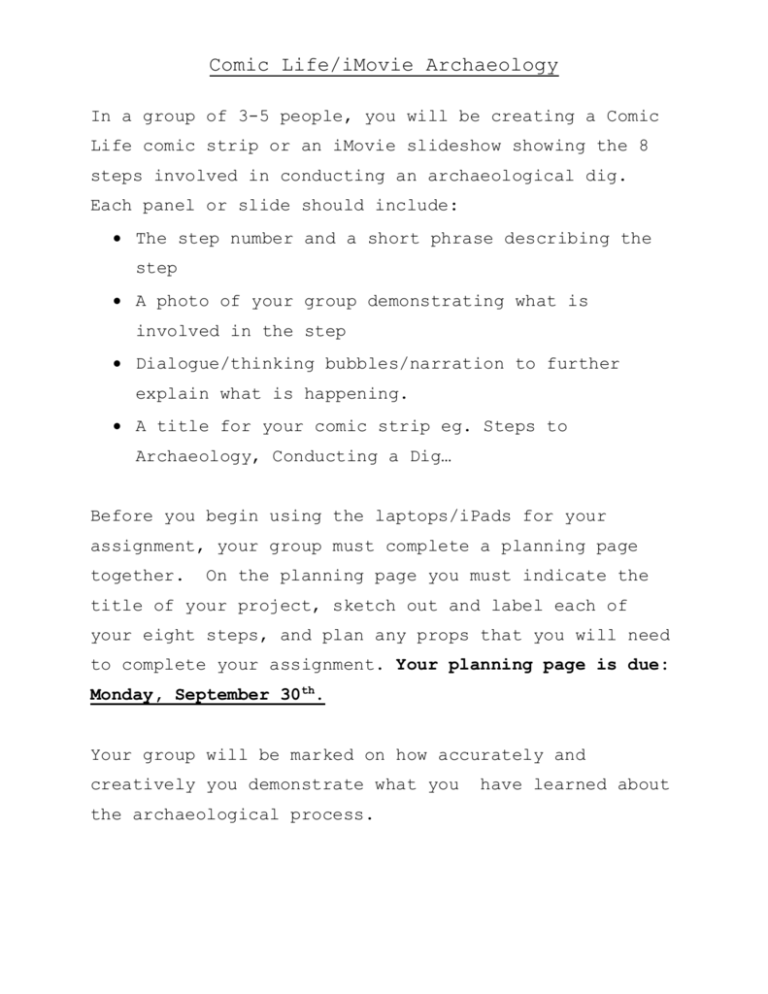
Comic Life/iMovie Archaeology In a group of 3-5 people, you will be creating a Comic Life comic strip or an iMovie slideshow showing the 8 steps involved in conducting an archaeological dig. Each panel or slide should include: The step number and a short phrase describing the step A photo of your group demonstrating what is involved in the step Dialogue/thinking bubbles/narration to further explain what is happening. A title for your comic strip eg. Steps to Archaeology, Conducting a Dig… Before you begin using the laptops/iPads for your assignment, your group must complete a planning page together. On the planning page you must indicate the title of your project, sketch out and label each of your eight steps, and plan any props that you will need to complete your assignment. Your planning page is due: Monday, September 30th. Your group will be marked on how accurately and creatively you demonstrate what you the archaeological process. have learned about Each square is out of 2 marks: one mark for the accurate description and the other for a accurate portrayal of what is involved in the step. Your group will also receive a mark out of 4 for overall creativity and a mark out of 4 for neatness/spelling and a moark out of 10 for the thoroughness of your Planning Page. Attach the rubric found on the following page to your planning page when you hand it in. You will have two class periods (Sept. 30th & October 2nd) to complete your project. Due Date: Monday, October 7th Fill in all group member names on the rubric below and attach it to the back of your Planning Page before handing it in. It will be used to mark your final project. Group Members: Step 1 Step 2 Step 3 Step 4 Step 5 Step 6 Step 7 Step 8 Creativity /2 /2 /2 /2 /2 /2 /2 /2 /4 Neatness Planning Page Completion Total /4 /10 /34 8 Steps in an Archaeological Dig - use this page to add details/notes from class discussion 1.Determine where to dig. 2. Carefully map out the area. 3. Form a grid by dividing the surface into squares and labelling the coordinates. 4. Begin digging with a large tool. Switch to a finer tool when they come to what is believed to be an artifact/relic. 5. Sift the loosened soil through a mesh sieve so that tiny objects are not overlooked. 6. Label and record all objects found. 7. Mark the exact location of all objects on a grid map. 8. Take the finds back to the laboratory for further examination.


